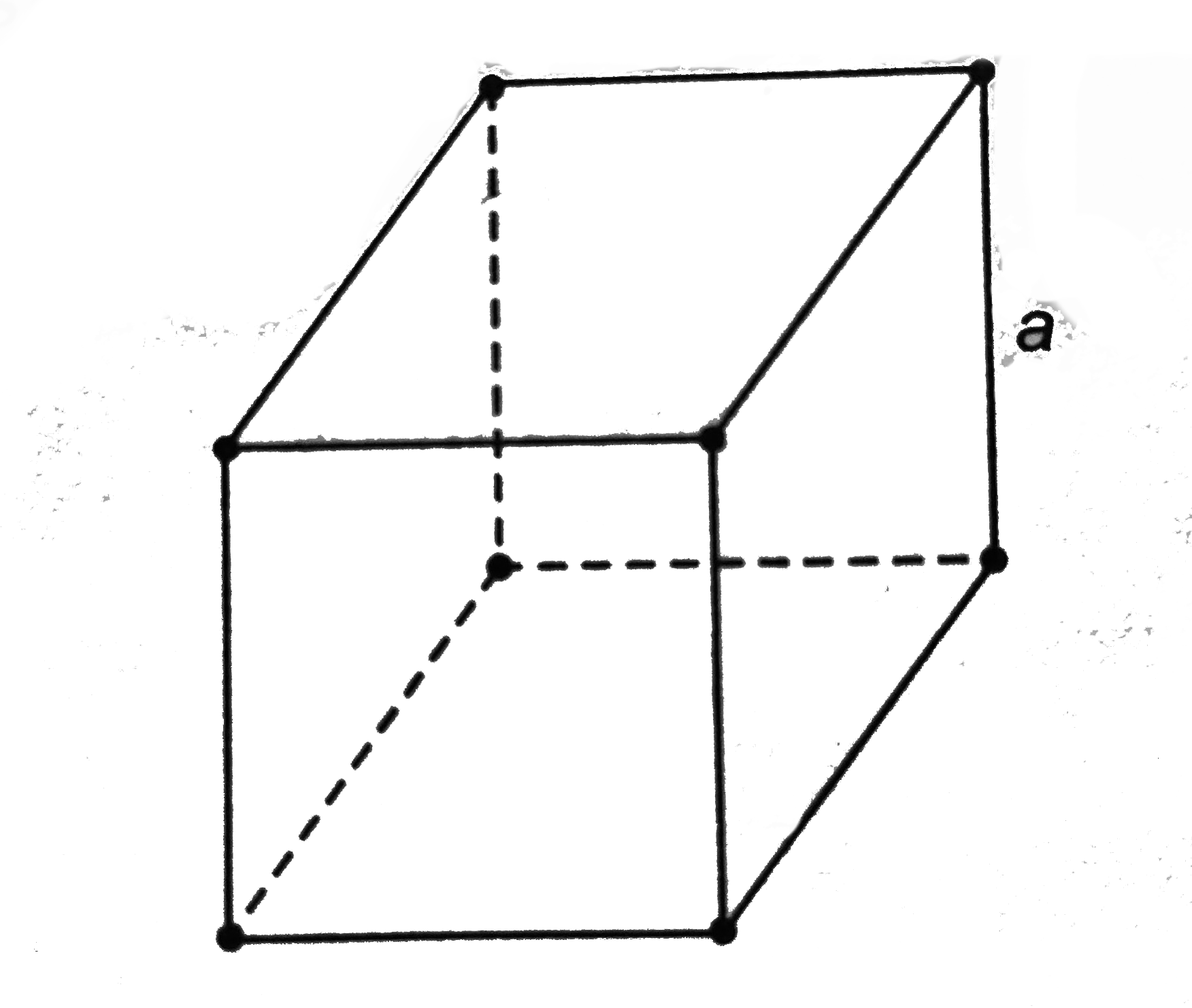A system consists of n identical particles each of mass m. The total number of interaction potential energy terms possible are n(n−1)x. Find value of x.
The correct Answer is:B
To find the value of x in the expression for the total number of interaction potential energy terms possible for n identical particles, we can follow these steps:
Step 1: Understand the Problem
We have n identical particles, and we want to determine how many unique pairs of interactions can occur between these particles.
Step 2: Identify the Interaction Pairs
Each interaction potential energy term corresponds to a unique pair of particles. For example, if we have particles labeled as P1,P2,P3,…,Pn, the interactions can be represented as pairs like (P1,P2),(P1,P3),…,(Pn−1,Pn).
Step 3: Calculate the Number of Unique Pairs
The number of ways to choose 2 particles from n particles is given by the combination formula nC2, which is calculated as follows:
nC2=n!2!(n−2)!=n(n−1)2
Step 4: Relate to the Given Expression
According to the problem, the total number of interaction potential energy terms is given as n(n−1)x.
Step 5: Set Up the Equation
From our calculation, we have:
n(n−1)2=n(n−1)x
Step 6: Solve for x
To find x, we can equate the two expressions:
n(n−1)2=n(n−1)x
By cross-multiplying, we get:
n(n−1)⋅x=n(n−1)⋅2
Assuming n(n−1) is not zero (which is valid for n≥2), we can divide both sides by n(n−1):
x=2
Conclusion
Thus, the value of x is 2.
---
We have n identical particles, and we want to determine how many unique pairs of interactions can occur between these particles.
Each interaction potential energy term corresponds to a unique pair of particles. For example, if we have particles labeled as P1,P2,P3,…,Pn, the interactions can be represented as pairs like (P1,P2),(P1,P3),…,(Pn−1,Pn).
The number of ways to choose 2 particles from n particles is given by the combination formula nC2, which is calculated as follows:
According to the problem, the total number of interaction potential energy terms is given as n(n−1)x.
From our calculation, we have:
To find x, we can equate the two expressions:
Thus, the value of x is 2.
Topper's Solved these Questions
- GRAVITATIONBOOK - VMC MODULES ENGLISHCHAPTER - GRAVITATIONEXERCISE - Level-2
30 Videos
- GRAVITATIONBOOK - VMC MODULES ENGLISHCHAPTER - GRAVITATIONEXERCISE - JEE Main (Archive)
43 Videos
- GRAVITATIONBOOK - VMC MODULES ENGLISHCHAPTER - GRAVITATIONEXERCISE - LEVEL -0 Long Answer Type
3 Videos
- GASEOUS STATE & THERMODYNAMICSBOOK - VMC MODULES ENGLISHCHAPTER - GASEOUS STATE & THERMODYNAMICSEXERCISE - JEE ADVANCED (ARCHIVE )
111 Videos
- INTRODUCTION TO VECTORS & FORCES BOOK - VMC MODULES ENGLISHCHAPTER - INTRODUCTION TO VECTORS & FORCES EXERCISE - JEE Advanced ( ARCHIVE LEVEL-2)
12 Videos
Similar Questions
The total number of orbitals possible for the quantum number n is
View SolutionFour particles each of mass m are kept at the four vertices of a square of side 'a' . Find gravitational potential energy of this system.
View SolutionEight particles of mass 'm' each are placed at the verties of a cube of side 'a' . Find gravitational potential energy of this system .
 .
.
View SolutionA particle of mass = 2kg moves in simple harmonic motion and its potential energy U varies with position x as shown. The period of oscillation of the particle is nπ5 second. Find value of n.

View SolutionFind the potential energy of a system of four particles each of mass 2m kept at the vertices of a square of side x. Also find the potential at the centr of the square.
View SolutionFind the totoal number of distnct or
dissimilar terms in the expansion of
(x+y+z+w)n,n∈N
View SolutionIf m and n are the two natural number such that mn=25, then find the value of nm:-
View SolutionIf the constant term in the binomial expansion of (x2−1x)n,n∈N is 15, then find the value of n.
View SolutionIf the constant term in the binomial expansion of (x2−1x)n,n∈N is 15, then find the value of n.
View SolutionStatement 1: The total number of dissimilar terms in the expansion of (x1+x2++xn)3isn(n+1)(n+2)6.
View Solution
